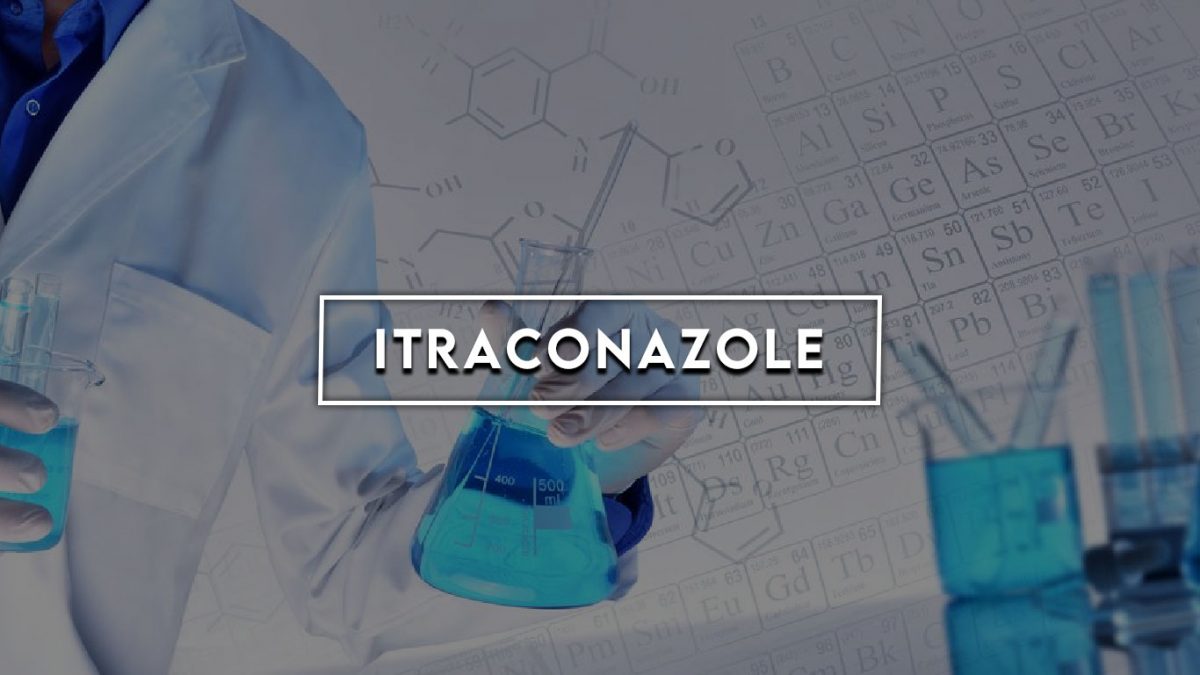Itraconazole

Itraconazole
Overview
Itraconazole is a broad-spectrum antifungal agent for oral treatment of vulvovaginal candidiasis, pityriasis versicolor and dermatophytes. Itraconazole is a substituted triazole derivative. Itraconazole active works against many Candida species, endemic mycoses and dermatophytes. Itraconazole is the most potent of available azoles, but effectiveness can be limited by reduced bio availability. The requirement for intravenous administration and the toxicity of the older antifungal agents created a need for antifungal agents with a better therapeutic profile. The relatively non-toxic oral azole medications represent the first major advance in this direction. Since their introduction in the 1980s, these medications have played an increasingly important role in the systemic therapy of fungal diseases.
Primary Characteristics
Itraconazole is also known as Oriconazole. It is of Synthetic origin and belongs to Triazole. It belongs to Antifungals pharmacological group. The Molecular Weight of Itraconazole is 705.60.
Its pKa is 3-4.
Indications
Itraconazole is primarily indicated in conditions like Advanced breast or prostate cancer, Antifungal prophylaxis, Candidiasis, Cryptcoccal meningitis, Dermatophytic infections, Histoplasmosis, Oculomycoses, Onychomycoses, Oral candidiasis, Oropharangeal candidiasis, Orophyrangeal candidiasis, Pityriasis versicolor, Sporotrichosis, Superficial candidiasis, Systemic mycoses, Tinea pedis, Tinae manuum, To reduce intestinal secretions and vomiting, To reduce intestinal secretions and vomiting (palliative care), and can also be given in adjunctive therapy as an alternative drug of choice in Cushing`s syndrome due to malignant disease, Fungal keratitis, Leishmaniasis, Vulvo-vaginal candidosis.
Pharmacokinetics
Oral absorption of Itraconazole is found to be 42.5% ±42.5. Volume of distribution is found to be 10.7 l/kg and plasma protien binding is 99.8%. Presystemic metabolism is noted to be 22.5% ±22.5 and metabolism is reported Hepatic. Renal Excretion accounts for 40% (inactive metabolite) and plasma half life is 20 hr.
Mechanism of action
Itraconazole interacts with 14-? demethylase, a cytochrome P-450 enzyme necessary to convert lanosterol to ergosterol. As ergosterol is an essential component of the fungal cell membrane, inhibition of its synthesis results in increased cellular permeability causing leakage of cellular contents. Itraconazole may also inhibit endogenous respiration, interact with membrane phospholipids, inhibit the transformation of yeasts to mycelial forms, inhibit purine uptake, and impair triglyceride and/or phospholipid biosynthesis
Side Effects
The severe or irreversible adverse effects of Itraconazole, which give rise to further complications include Hypotension, Hepatitis, Hypotension.
Itraconazole produces potentially life-threatening effects which include Dysrhythrics. which are responsible for the discontinuation of Itraconazole therapy.
The signs and symptoms that are produced after the acute overdosage of Itraconazole include Constipation, Gastritis, Depression.
The symptomatic adverse reactions produced by Itraconazole are more or less tolerable and if they become severe, they can be treated symptomatically, these include Dizziness, Vertigo, Headache, Fatigue, Nausea, Vomiting, Diarrhea, Abdominal pain, Pruritus, Hallucination, Somnolence, Hair loss, Edema, Photophobia, Vasculitis, dizziness.
Warning / Precautions
Itraconazole should be used with caution in patients with liver disease, heart rhythm disorders (arrhythmias) and of any drug allergies. It should be used with caution while engaging in activities requiring alertness because this medication causes dizziness or drowsiness. It should be used only when clearly needed during pregnancy or lactation. Safe use of itraconazole in the children under the age 16 has not been established. The drug should be used with caution in the patients with azole hypersensitivity. Patients who develop abnormal liver function tests during itraconazole therapy should be monitored and therapy discontinued if symptoms of the liver disease develop. Should not be administered to treat onchonycosis in pateints with ventricular dysfurution.
Storage Conditions
Capsules:
Store Between 15°C-30°C. Protect from Sunlight, Moisture and Heat.
Solution:
Store at room temperature, Below 25°C. Do not Freeze. Protect from Sunlight and Heat.
Interference in Pathology
Elevated liver enzymes
